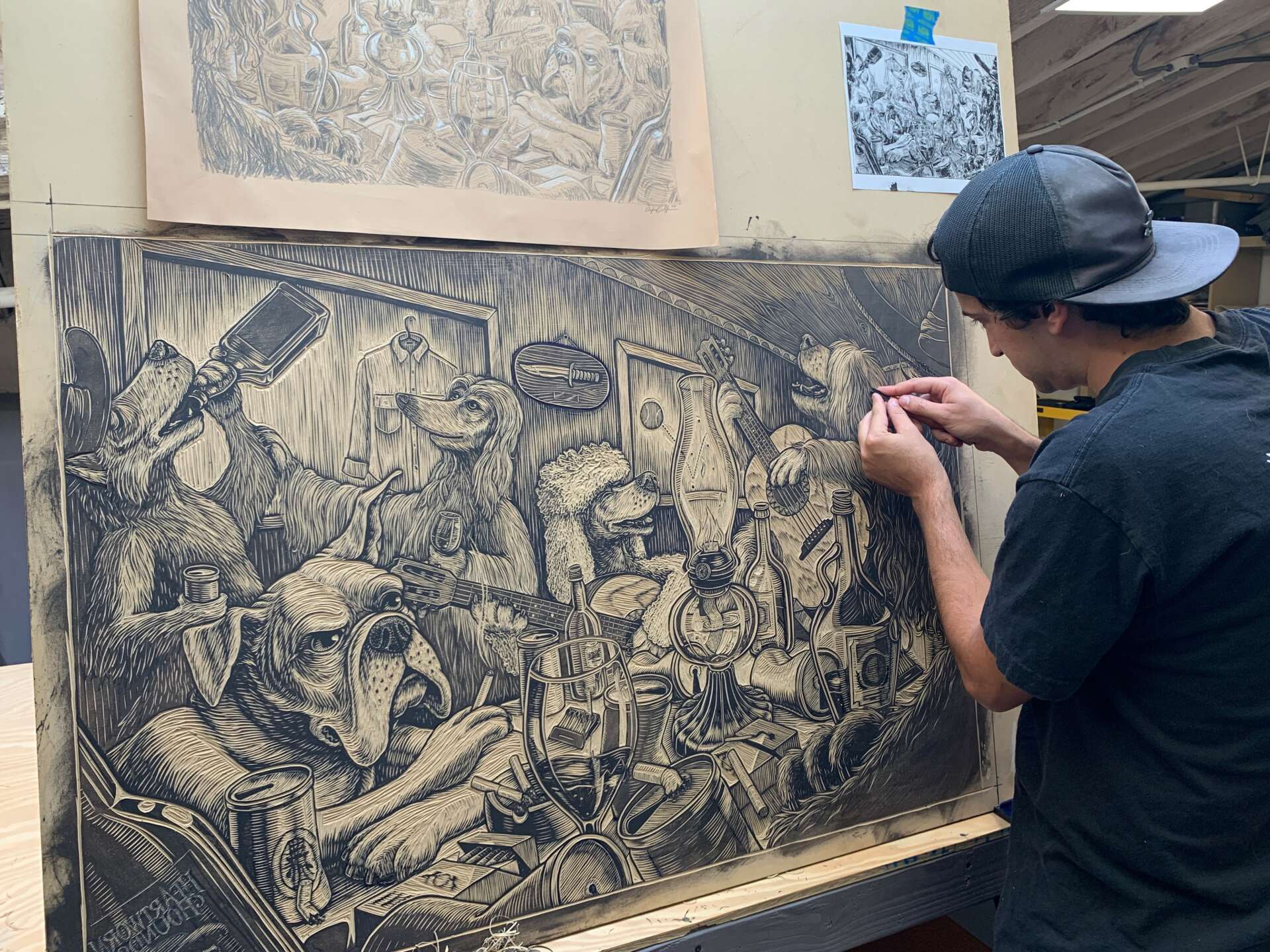We recently connected with Dylan Goldberger and have shared our conversation below.
Dylan, looking forward to hearing all of your stories today. Have you been able to earn a full-time living from your creative work? If so, can you walk us through your journey and how you made it happen? Was it like that from day one? If not, what were some of the major steps and milestones and do you think you could have sped up the process somehow knowing what you know now?
I feel very lucky to be making a living off of my art. I’ve been doing freelance illustration for the past 10 years and I can tell you the jobs I’m most proud of have all come from the client seeing self-generated work. You need to have the drive and discipline to work for hours on your own stuff. When there’s no work coming in, get started on that new book idea, or t-shirt graphic. Put it out in the world and who knows who will see it and say hey, we should get him to do something like that for us. One of my biggest personal projects was writing, illustrating, and self-publishing a skateboarding dog children’s book. I got a write-up in Thrasher Magazine, landed my first skateboard graphic job with a major company, and even licensed an illustration from it to be used as a newspaper cover. It’s the accumulation of things like that over the years that have helped me piece together a living off my work. Today I pretty much split my time down the middle between client work and self-generated prints and other hand made goods for my online shop Dog Gone Studios.
I don’t know that there’s any way to speed up the process, in a way it often feels like luck or being in the right place at the right time. If you work all the time, you’re missing opportunities to be social, but if you’re always out and about you’re missing hours that could be spent in the studio. You just have to find the right balance that works for you.
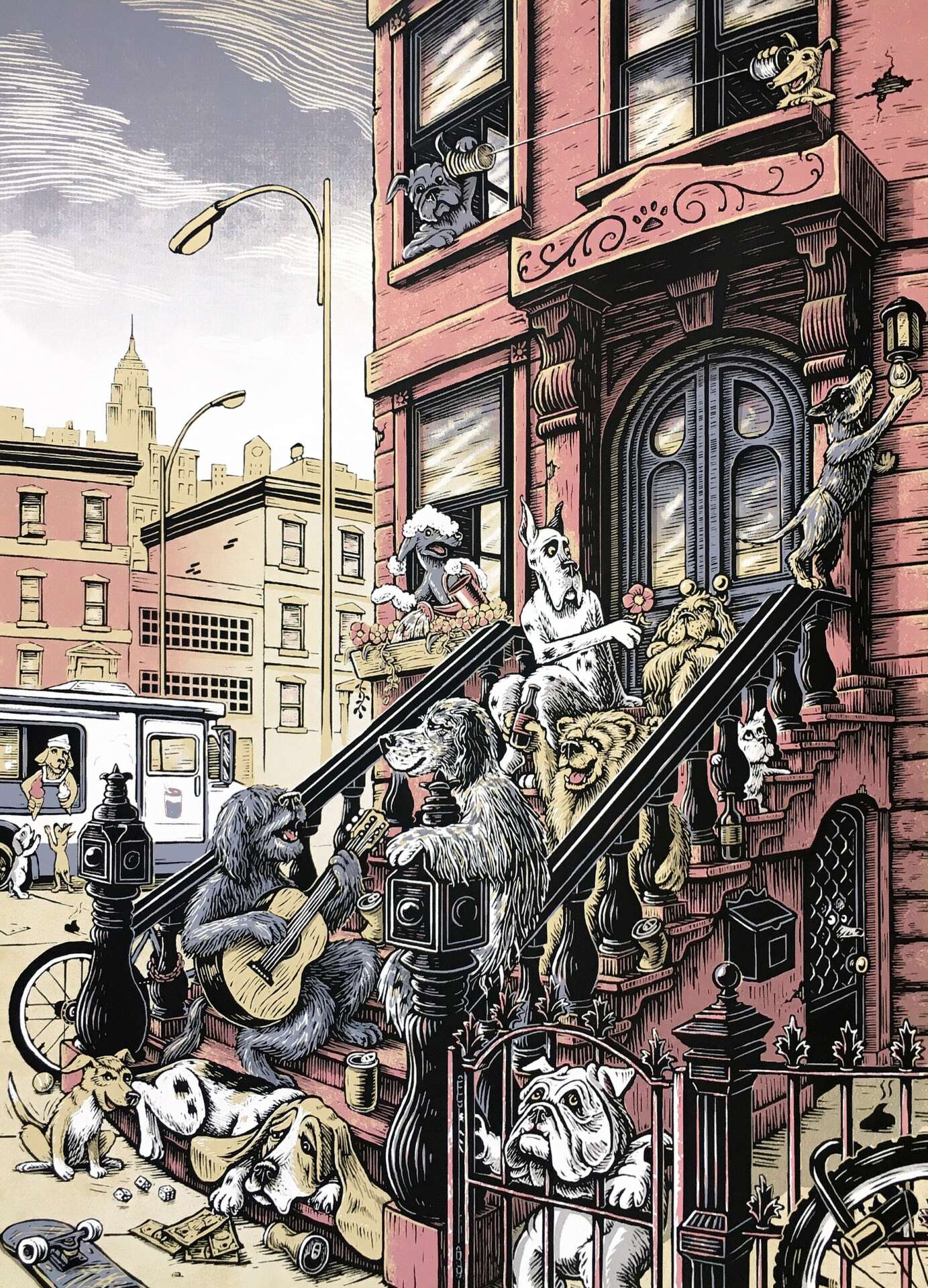

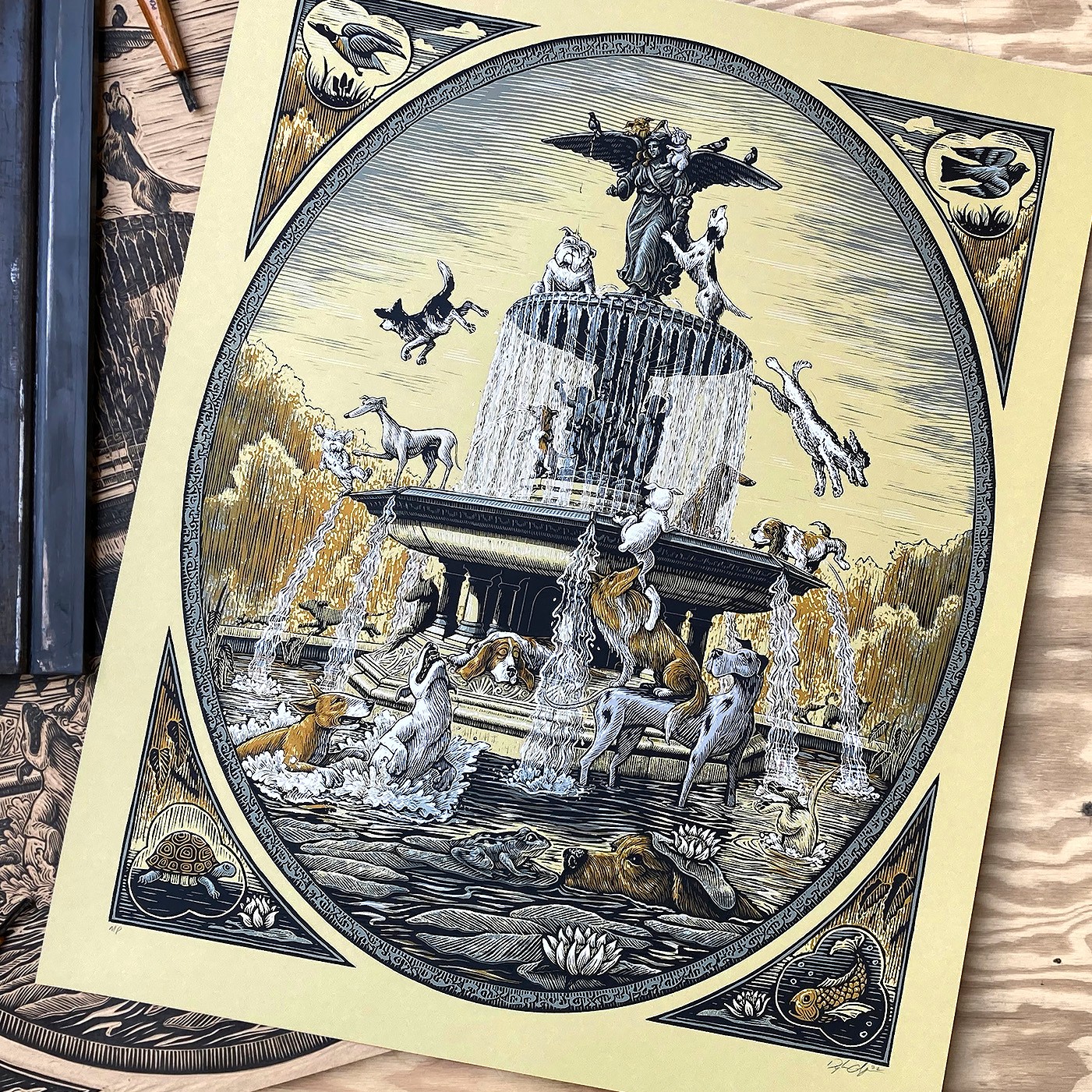
As always, we appreciate you sharing your insights and we’ve got a few more questions for you, but before we get to all of that can you take a minute to introduce yourself and give our readers some of your back background and context?
I’m a Brooklyn based illustrator and printmaker. I’ve been drawing all my life and skateboarding since I was 10. I loved going to the skate shop and looking at all the graphics and stickers, but I don’t think it really clicked until college that it was someone’s job to make all those. I took a screenprinting class with Dennis McNett that changed my life. I ended up getting an internship with him and went on to work in his studio for many years after graduating, learning all about printmaking and how to making a living off you’re art without a traditional 9-5. I fell in love with DIYness of printmaking and began editioning and selling some of my work.
Early on I got almost all my illustration work from the network of friends I’d made through the skateboarding community. To this day I still do a ton of work involving skateboarding, including art direction for Coda Skateboards. I’ve illustrated around 85 or so boards.
The two most consistent themes throughout my work are animals and motion. I jump around between woodcut/linocut and digital drawing, but I try to keep the same look consistent throughout my work. The woodcut style texture lends itself perfectly to all the different fur, scales, and feathers found in the animal kingdom. I prefer the physical labor of carving a block over staring at a screen all day, but when it comes down to it as a job, time is money and sometimes the budget just isn’t there to spend weeks on a carving. When I edition my prints, I usually screenprint them.
I started Dog Gone Studios as my online store in 2020, and have original prints, T-shirts, coasters, stickers etc. that I’ve illustrated and printed myself.
Any insights you can share with us about how you built up your social media presence?
I think social media is a great tool for an artist or small business owner. It’s my main source of advertising and definitely get a good amount of sales and commissions through it, but I can definitely understand people’s growing frustration with the algorithm and how few people actually see posts. I think the best thing you can do is offer something to your audience rather than just try to sell sell sell. Telling a story behind why you made something or showing a process or how to is much more interesting than just seeing a product description and a link to buy. You also don’t need to be on every platform. Find something that works best for you and roll with that.

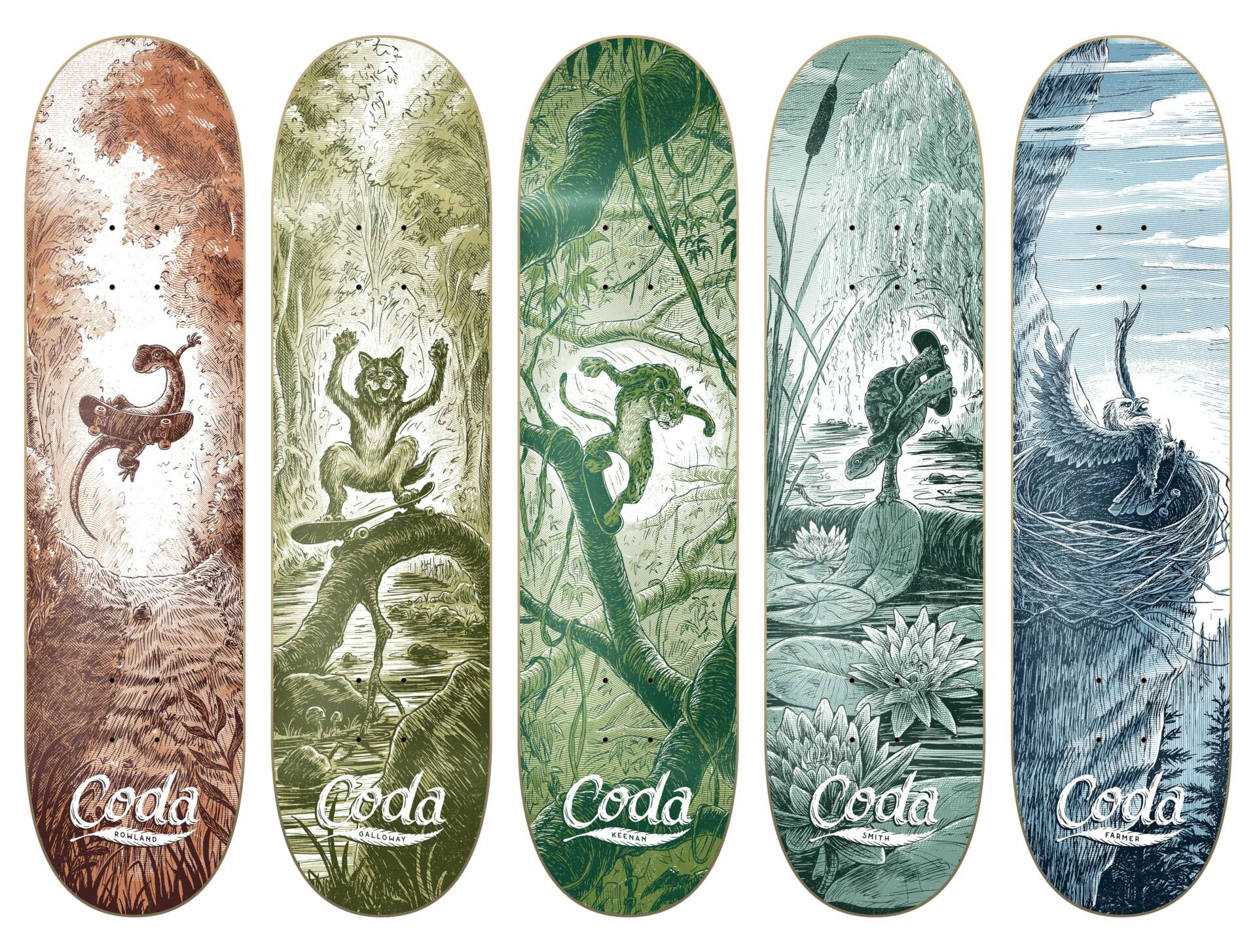
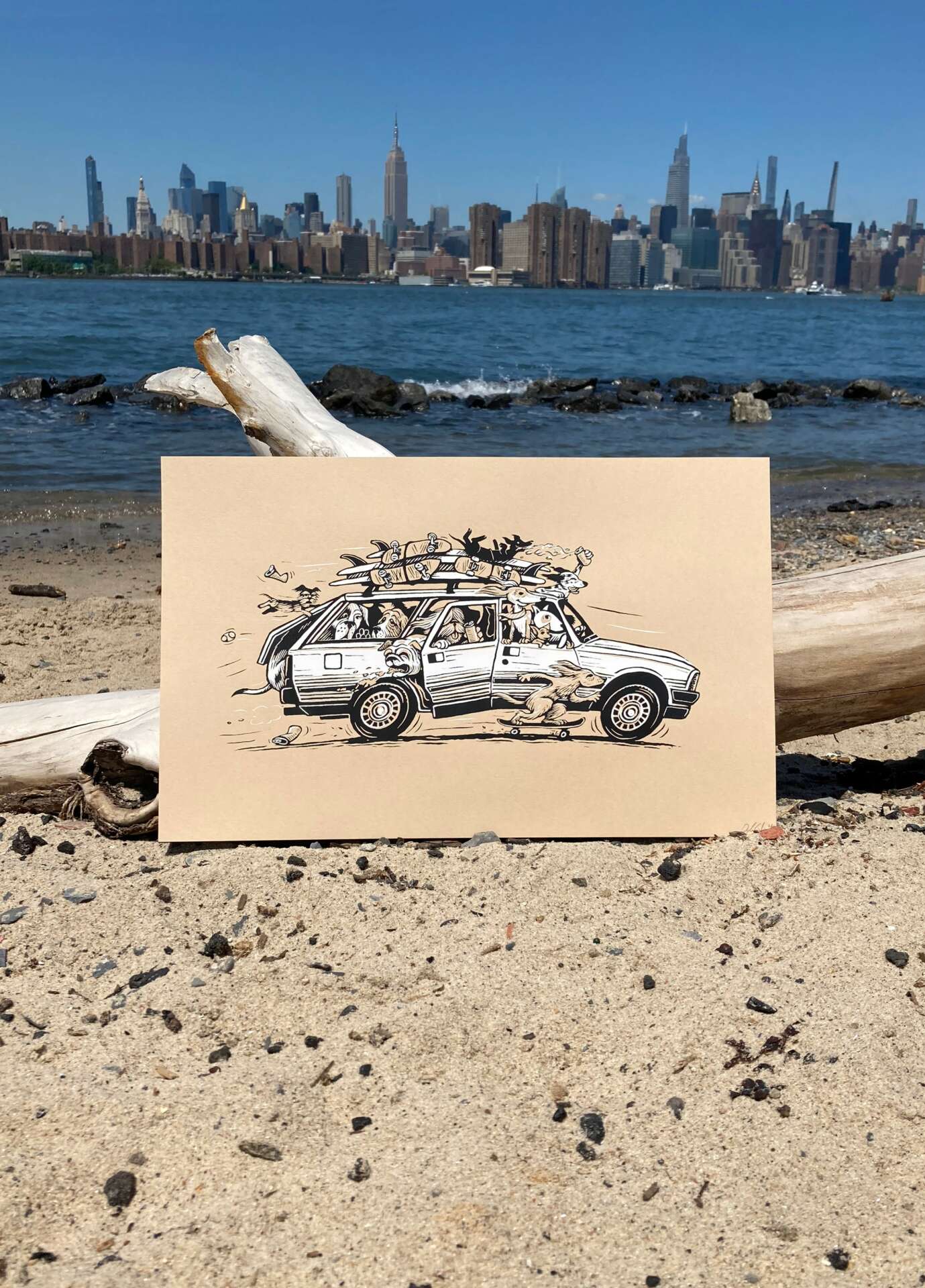
Looking back, are there any resources you wish you knew about earlier in your creative journey?
The number of free podcasts and online resources available today is so valuable. I’m sure there was some of this stuff available when I was first starting out, but these days you can look up how to do almost anything on youtube or listen to thousands of hours of podcasts of other people’s creative journeys. There are a ton of artists who have created very affordable online classes and downloadable resources. I’m sure with a quick google you’ll be able to find something closely related to whatever you’re interested in learning. Here’s a short list of some things I’ve found very helpful- “Freelance and Business and Stuff” is a great book by Hoodpah Design for setting up the business side of things for a creative and they also offer an online class that goes through the book step by step.
Jessica Hische is a letterer who has great info on her site about creative freelancing and an awesome email writing helper.
Aaron Blaise is a former Disney Animator that has great animal drawing and animation lessons available to purchase, plus tons of demos on his youtube.
Adventures in Design is a monthly subscription podcast that has 1500+ episodes talking with all different types of creatives.
Contact Info:
- Website: dylangoldberger.com
- Instagram: dylanjg
- Other: Tiktok: @doggonestudios


